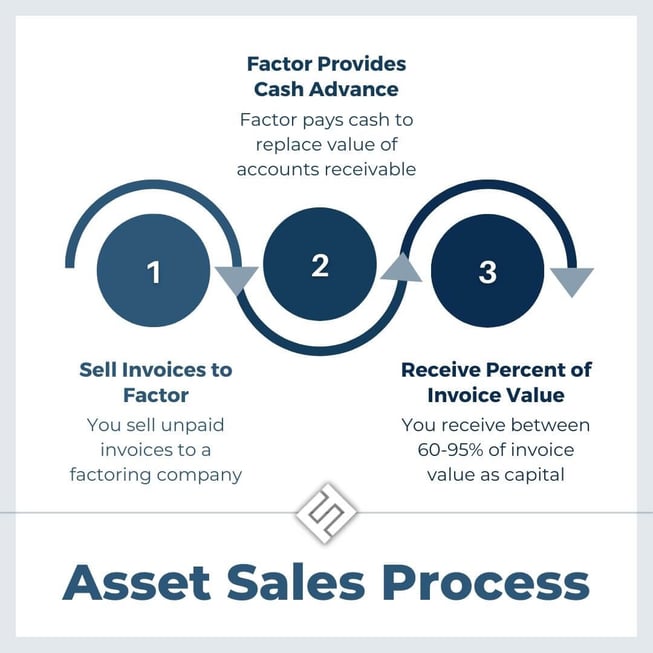
When you are a small business owner, any drop in the revenue stream can cause you to pay your own bills late, prevent you from leveraging discounts on equipment or materials, or keep you from hiring additional employees. Waiting for customers to pay invoices can set you back even further.
Financing your accounts receivable is an easy, convenient way to get a cash advance for the face value of your unpaid invoices. If you set up a regular factoring relationship, your revenue stream evens out and opens up new opportunities for growing your business.
Accounts receivable financing is a method of business factoring. Factoring can take on different financing structures. Every factoring company has a process for accepting businesses and invoices for factoring, including the type of industry, amount of invoice, and invoice preparation.
Factoring Defined
Factoring is a financial arrangement in which a business owner sells unpaid invoices to a third party, known as a factor, at a discount or uses them for collateral to obtain a cash advance or loan.
The factoring company pays anywhere from 60% to 95% of the invoice's face value to you as a cash advance. Once your customer pays the invoice, the factoring company pays you the balance of the invoice minus fees. Many businesses use factoring to help stabilize cash flow, allowing for daily needs to be met while waiting on payments from customers or clients.
Accounts Receivable Factoring
You may hear accounts receivable factoring and accounts receivable financing used interchangeably, but technically, factoring is an asset sale while financing is a loan arrangement using invoices as collateral.
Accounts receivable are assets equal to the outstanding balance of the invoices you bill to your customer. In other words, customer invoices that are not yet paid. Other terms for accounts receivable factoring are A/R financing, invoice financing, and ledgered line of credit.
The typical steps for accounts receivable financing are as follows:
- Account setup
- Preparing your receivables
- Verifying your receivables
- Financing
- Payments and settlement
Factoring works because your accounts receivable are considered liquid assets when used to identify and calculate your quick ratio. Your business's quick ratio is determined by adding your cash equivalents, marketable securities, and accounts receivable under a year old, then dividing the result by your current liabilities.
Factoring can be full recourse, reserve account, or reserve amount.
- Full recourse - the factor can force you to pay for invoices that remain uncollectible after a specified time.
- Reserve account - the factor places a percentage of the paid invoices into a reserve account to pay for uncollectible invoices.
- Reserve amount - the factor withholds a portion of the cash advance until the invoice is paid.
You determine which invoices you offer for factoring, but the factor determines which invoices it accepts. Depending on your agreement, the factor charges a fee called a due diligence fee or setup fee to cover the cost of performing a credit check on the customers whose invoices you factor.
Most factors contract for specific volumes and frequencies of invoices to buy. They may expect to purchase invoices of a minimum value or higher weekly, monthly, or by another contracted schedule.
How Fast Can You Get Your Money?
If you are an established factor customer, you can receive funds within a few hours to a couple of days. If you are a new customer, it could take longer for the factor to verify the invoices and advance payment. If you intend to factor, make sure you choose a company with a quick turn around to get you your cash fast.
Financing Structures
Technically, factoring is an asset sale, while financing is a loan arrangement.
Asset Sales
An asset sale is the most typical financing structure for small business accounts receivable factoring. Here’s how it works:
- You sell your accounts receivable to the factor.
- The factor provides capital paid as a cash advance to replace the value of the accounts receivable on your balance sheet.
- You receive between 60% to 95% of the face value of your invoices, depending on the factor.
Depending on the principle to value ratio in your factoring contract, you may need to write off any unfinanced balances. Factors might not choose to buy every invoice you offer. Also, most factoring companies will not buy defaulted receivables. They focus primarily on short-term receivables that are likely to be paid, reducing the default risk of purchasing invoices.

Loans
Factoring companies often provide both accounts receivable factoring and financing. Accounts receivable financing is a loan arrangement. The advantage is the accounts receivable are not sold to the factor. You still own them. You are merely using them as collateral against their eventual collection to obtain cash now.
Since accounts receivable financing is a loan, you are required to repay it. Factoring companies can offer loans and lines of credit based on your accounts receivable balances. You repay the loan balance over time, usually including fees and interest.
A factoring company can link to accounting systems like QuickBooks so you can receive immediate advances against individual invoices or manage line of credit limits.
Fees and Underwriting
The terms of each factoring agreement and the amount offered in relation to the accounts receivable vary according to several elements. Factoring companies first verify your customers' creditworthiness before purchasing an invoice. They only buy invoices of customers with an excellent history of payment.
The factoring period is the amount of time the factor allows your customers to keep their invoices open, impacting the fees you pay.
Depending on the factor, you may be charged a flat rate or a variable rate.
Typical factoring fees for a funding company are somewhere around 2%–4.5% for the first month, and then about 0.5% for every additional 10 days that the invoice remains unpaid.
Factor Funding’s fees hover around 0.07% and 0.1% each of the days an invoice is outstanding, or once it’s factored. Learn more about our pricing.
When you sign a factoring agreement, be sure to understand whether the rate is charged weekly, monthly, or according to some other schedule.
The age of the receivables has the most significant influence on the financing terms. Short-term receivables generally have better terms, while longer terms or delinquent receivables lead to a lower principal to value ratio and reduced financing amounts.
Advantages of Factoring
Why would a small business turn to factoring when experiencing financial hardship? There are many advantages to the practice.
First and foremost, you retain ownership of your business. You are not required to give up any part of it to obtain financing. All you do is sell your invoices or use them as collateral.
Factoring allows you to obtain cash quickly without going through the business loan process, which can be rather lengthy. Because factors do not consider your business’s credit score or financial history as heavily (if at all), they can be lenient with their loan approvals.
Unlike a business loan, you may be able to get 100% of your invoice value immediately, freeing up cash while you wait for customer payment. And with factoring, you don’t need to worry about repayment schedules or accounts receivables collection.
Other advantages include:
- No need for additional collateral beyond the invoice
- A simple application process
- No need to apply every time you need cash
- Dynamically changing funding amounts based on the value of your invoices
- Approval interest rates reflect your customers’ credit, not yours
Unlike a loan, with factoring there is no debt or regular repayment. Instead, your customer pays on the invoice. Finally, factoring fees are tax-deductible as business expenses.
Disadvantages of Factoring
Of course, factoring is not without its downsides. When partnering with a factoring company, you give them full control over your accounts receivable responsibilities, meaning you’re completely depending on them to collect the invoices from your customers.
Depending on your agreement, it may be difficult to leave the factoring agreement early. Also, the partnership may affect your relationship with your customers. The factor may enforce credit limits to prevent your customers from owing too much, and any customer disputes on invoice charges must be settled immediately to avoid chargeback.
Finally, your qualification and interest rate are based on your customers’ credit, which can be a disadvantage in some cases. This is why it’s very important to do your research and choose a reputable factoring company that you can trust.
Who Qualifies for Factoring?
There are some qualifications you must meet in order to qualify for accounts receivable factoring. These include:
- Customers with good credit. You’ll need to factor invoices from customers who habitually pay their accounts on time.
- Clean company record. Though you don’t need good credit, your business does need to have a clean financial and tax background.
- Invoices over $10,000 per month. This number does vary, so check with the factoring company about their preferred monthly minimum.
Your company must also have an established invoicing practice that provides details about sales, prices, and payment timelines. Invoices must be for completed work or product, not work in progress. Factoring companies typically prefer newer invoices over older ones.
Your business might be a good candidate for factoring if you face any of the following:
- Short-term cash flow shortage
- Inability to meet seasonal demands
- A business opportunity that you don’t have the cash reserve to capitalize on
- A need to pay employees, suppliers, or regular bills while awaiting receivables payments
- A desire to reinvest in your business or make improvements
- The chance to take advantage of a temporary discount offered by a supplier
- A need to hire additional staff to grow your business or fill a seasonal need
If you operate a small to medium-sized business that meets the proper requirements, you could be a great candidate for factoring.
How to Prepare Invoices for Factoring
Most factors require the following documents:
- Your outstanding invoices
- A voided business check
- Bank statements
- A driver’s license or other government-approved ID
Many factoring companies have online portals that integrate with your accounting or invoicing software to streamline the factoring process.
These are the typical steps to a factoring application.
- Collect the required documents. You need to prove your identity, inform the factor about your business’s financial history, offer your outstanding receivables for completed work, and provide the username and password for your accounting software.
- Choose which receivables you want to use for financing. Review the status of your paid, unpaid, and financed invoices. Pick the specific invoices to factor.
- Submit your accounts receivable financing application. Most factors have an online process that generally takes just a few minutes.
- Receive your initial cash advance. This is typically 60% to 95% of the invoice face value, depending on the factor’s policies and your customers’ credit history.
- The factor receives payment from your customer(s).
- You receive the balance of the asset sale or loan minus fees from the factor.
If the factor purchases your invoices, you may be responsible for notifying the affected customers of the new payment address.
How to Find a Factoring Company
The best factoring companies are both fast and reliable. If your customers are reasonable credit risks, you might receive as much as 95% of invoice face value.
Ask the factor if they offer multiple financing options and are prepared to lend you the amount you need. Most factors have a range within which they can pay. For example, the factor may provide funding for invoices between $100 and $100,000. Another may be able to handle invoices between $20,000 and $5 million.
Factors may specialize in a particular industry or geographies. Typical industry specializations include:
- Manufacturing
- Construction
- Recruiting
- Printing
- Transportation
- Information Technology
- Medical
Check out the list of industries Factor Funding services.
Ask the factor for all information regarding fees and ensure they are all outlined in your contract. When selecting a factor, consider their age, reputation, factoring experience, and whether it is recourse or non-recourse factoring. If you need spot or contract factoring, check that the factor provides it.
Ask about industry specialization or familiarity and check on the level of customer support it offers to your customers whose invoices are factored.
Accounts Receivable Factoring Helps Improve Your Cash Flow
Traditional business financing isn’t always the right choice for a small or medium-sized business, especially if you need cash quickly.
Accounts receivable factoring is a faster, easier way to obtain funds to support and grow your business. Many customers negotiate payment terms that allow them time to pay their bills, delaying your cash flow. Instead of waiting weeks or months for your customer to pay an invoice, you can access the cash you need now.
Factoring simplifies your bill-paying and product purchases. Other uses for factoring include:
- Hiring and paying staff
- Making payroll when business is slow
- Paying rent and recurring bills
- Investing in marketing
- Buying more inventory to increase your margins
- Purchasing more materials for projects
- Buying new equipment
- Collecting funds faster on unpaid invoices
It’s easier to invest in and expand your business when you know you’ll have the cash on hand. You don’t have to wait until the end of every month to receive the bulk of your payments.
Accounts receivable factoring provides the financing you need to keep your business running and growing without waiting weeks for traditional financing. What better way to get the peace of mind you need than from an expert with decades of experience helping countless others in exactly the same way?
If you are interested in accounts receivable factoring and are ready to start a conversation about funding your business, contact Factor Funding today for a quick, no obligation quote. Here’s to your success!










